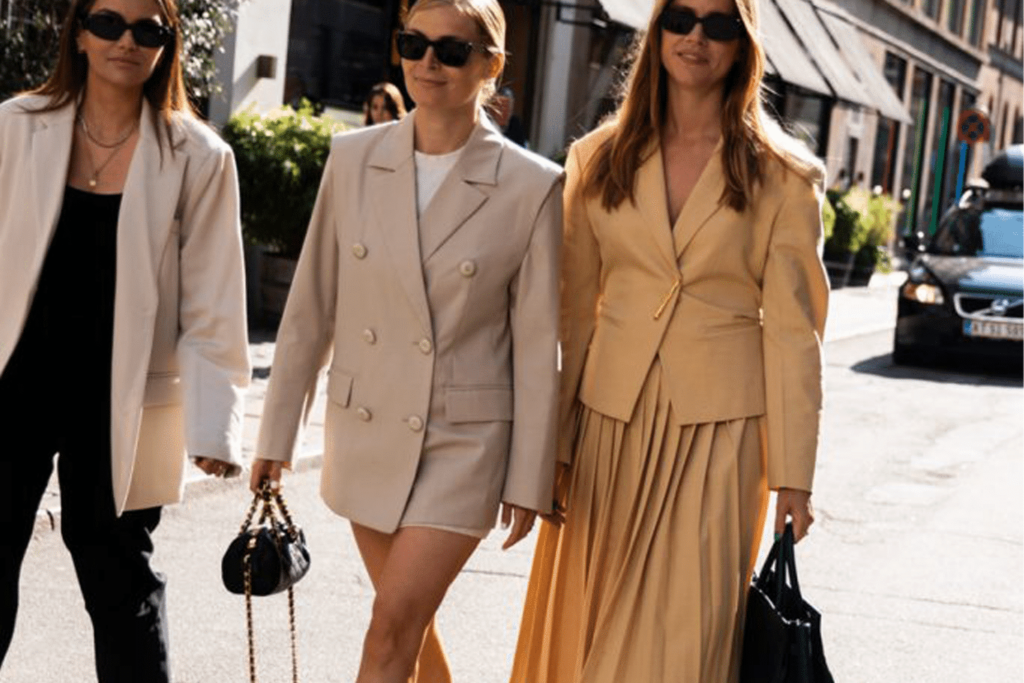Fashion and Technology: How Smart Clothing Is Changing the Industry

Fashion and Technology: How Smart Clothing Is Changing the Industry
In recent years, the worlds of fashion and technology have become increasingly intertwined, leading to the rise of smart clothing. From shirts that monitor your health to jackets that change color based on your surroundings, the possibilities for fashion enhanced by technology are expanding rapidly. Smart clothing, often referred to as “wearables,” blends innovation with style, offering a whole new approach to how we interact with our clothing. But how is smart clothing truly changing the fashion industry, and what does this mean for the future of both fashion and technology?
What Is Smart Clothing?
Smart clothing refers to garments that integrate advanced technologies to enhance the functionality of the clothing item. These garments often include embedded sensors, conductive fibers, and other digital elements that allow the clothing to interact with the wearer or the environment. Unlike traditional fashion, which focuses purely on aesthetics, smart clothing can monitor health metrics, adjust to temperature changes, or even connect with smartphones and other devices to provide real-time feedback.
Some popular examples include fitness wearables like smart leggings that track muscle activity or shirts that monitor heart rate, body temperature, and even stress levels. Other examples are jackets with built-in heating systems or shoes that can adjust their fit based on movement. These innovations are not just for the tech-savvy or athletes — they are pushing the boundaries of what fashion can do for everyday life.
The Intersection of Fashion and Technology

The fusion of fashion and technology has led to significant advancements in both fields. On the one hand, it’s allowing designers to create clothing that is more functional and tailored to the needs of the modern consumer. On the other, it’s introducing new possibilities for designers and brands to explore how technology can enhance the aesthetic and sensory experience of fashion.
Health and Fitness Monitoring
One of the most prominent ways smart clothing is changing the industry is by merging fashion with health and fitness. As more people focus on health and wellness, there’s a growing demand for clothing that not only looks good but also supports or tracks physical activity. Smart fabrics embedded with sensors can monitor various health indicators, such as heart rate, blood pressure, and even body temperature.
For instance, smart shirts from companies like Hexoskin and Athos track heart rate, respiration, and other biometric data, offering athletes and fitness enthusiasts real-time feedback on their performance. These garments allow for a more customized and data-driven approach to fitness, making it easier for individuals to reach their health and performance goals.
Moreover, health-oriented smart clothing can also serve as early warning systems for medical conditions. For example, clothes designed for elderly people can detect falls or monitor vitals, alerting family members or healthcare providers when necessary. This kind of proactive approach to health monitoring is one of the biggest innovations in the wearable tech space.
Sustainability and Smart Textiles
Sustainability is another area where smart clothing is making waves. With the fashion industry being one of the largest polluters globally, consumers and designers are looking for ways to create clothing that’s not only innovative but also environmentally responsible. Smart textiles can contribute to this goal by reducing waste and promoting more sustainable practices.
One such innovation is clothing that can adapt to different conditions, such as jackets or pants that adjust their temperature based on the weather. By allowing consumers to wear fewer pieces of clothing for different conditions, this reduces the need for multiple items and encourages a more minimalist and sustainable approach to fashion. Additionally, smart clothing may feature fabrics that are more durable and long-lasting, decreasing the frequency of replacement and reducing textile waste.
In some cases, smart clothing is being designed to be self-cleaning. The development of fabrics that can remove bacteria and stains through a built-in electrostatic charge or through solar-powered cleaning mechanisms could drastically reduce the need for washing clothes, thereby saving water and energy.
Interactive Fashion: Fashion That Responds to You

Another groundbreaking aspect of smart clothing is its ability to respond to the wearer or the environment. This interactive component opens up a whole new realm of possibilities in fashion design.
For example, clothing that changes color or pattern based on external stimuli, like temperature or light, is a major trend in the smart fashion world. The clothing uses embedded sensors and flexible displays to react to its surroundings. Fabrican, a company pioneering in the field, has developed fabrics that can change shape or even reconfigure based on external signals, offering new opportunities for custom designs and personalization.
Another fascinating area is the development of “mood-reactive” clothing. These garments change colors based on the wearer’s emotions, using biometric sensors to detect things like heart rate or body temperature. As this technology continues to advance, fashion could evolve into a truly interactive and dynamic experience, where your outfit mirrors your feelings or even adapts to the environment around you.
The Future of Smart Clothing: Convenience, Comfort, and Innovation
As the development of smart fabrics continues to advance, the potential for their use in everyday clothing is limitless. In the future, we may see more garments that offer not only health benefits but also enhanced comfort and convenience. Imagine shoes that automatically adjust to your feet or coats that charge your phone while keeping you warm. The integration of technology into fashion is making life more convenient and connected, bridging the gap between aesthetics, functionality, and personal well-being.
Fashion-forward brands such as Ralph Lauren and Tommy Hilfiger have already begun incorporating smart fabrics into their collections, showing that high-end fashion is also embracing these innovations. As these technologies become more accessible and affordable, smart clothing will likely become a staple in the wardrobes of many.
Conclusion: A New Era for Fashion
The convergence of fashion and technology is opening up new opportunities for creativity and functionality. Smart clothing is not only enhancing the way we dress but also making significant contributions to health, sustainability, and lifestyle. Whether it’s tracking fitness metrics, adjusting to temperature changes, or offering interactive design, the future of fashion is undoubtedly intertwined with technology. As more companies invest in this emerging field, we can expect smart clothing to evolve into an even more indispensable part of our lives, revolutionizing the way we experience fashion.
Incorporating technology into fashion isn’t just about making clothes smarter; it’s about reshaping the very way we think about what we wear. And as this fusion continues, it’s clear that the future of fashion will be not only stylish but also functional, sustainable, and incredibly innovative.









